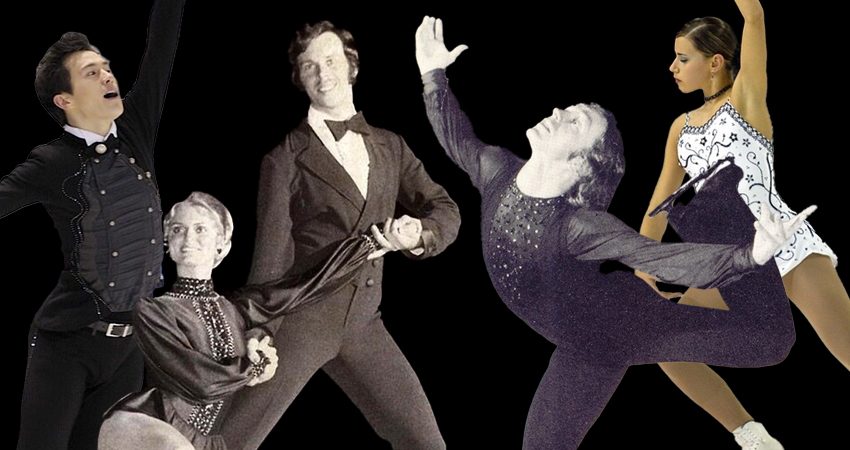50 Years of Skating
October 25th marks the 50th edition of Skate Canada International (SCI) – the second competition on the annual ISU Grand Prix of Figure Skating series. Over the past 50 years there have been many changes and monumental moments in the sport of skating. Leading up to this year’s competition in Halifax, take a look at some of the noteworthy milestones in skating from the 1970s to the present day.
1970s
Inspired by ballroom dancing, the Ice Dance category is featured at the first Skate Canada International in 1973 and later added to the Winter Olympics games in 1976.
Known as ‘Mr. Figure Skating,’ Johnny Esaw continues as a prominent force in figure skating broadcasting and provides commentary at several editions of Skate Canada International.
This decade saw improvements in athletes’ technical and physical abilities. The first skaters landed triple jumps, and many began practicing quad jumps. At the 1978 World Championships, Canadian skater Vern Taylor is the first to complete a successful triple axel in competition.

The 1975 Canadian Figure Skating Team
1980s
Canadian skater Brian Orser is the first to land a triple axel at the Olympics during the 1984 Winter Games. Japanese skater Midori Ito becomes the first woman to land a triple axel in competition at the 1988 NHK Trophy.
The Pairs category first appears at the 1984 Skate Canada International held in Victoria, BC.
In 1986 Stars on Ice is born. Loved by fans around the world, the show has continued to be held annually and has featured some of Canada’s best skaters throughout the last 40 years.
1990s
In 1990 the International Skating Union (ISU) votes to remove compulsory figures from competitions. These circular patterns which skaters would trace on the ice were one of the oldest forms of figure skating in the first 200 years of the sport. Removing compulsory figures led to a focus on the free skating category during competitions.
The 1992 Winter Olympics are the last winter games to be held in the same year as the summer Olympics. The 1994 Winter Games is held in Norway to begin the two-year staggering between the summer and winter games.
The Fours category appears at SCI in 1990 and is included until 1997. This category was popular in Canadian skating clubs during the early 1900s before disappearing until the late 1980s. It featured lots of pair’s elements and variations that differed from a focus on stringent figures. ‘Artistic’ skating also shows up at the at the 1990 SCI with a Men’s and Ladies Interpretive category.

The 2003 ISU World Synchronized Skating Championships
2000s
In 2004, the ISU creates the International Judging System. This new system abandoned comparative analysis, and instead adopted a criteria-based points system. Skaters can now get instant, computer assisted results on their technical score and specific program components. Abandoning the old 6.0 system improved objectivity in judging and allowed athletes to train targeted aspects of their program.
The first Synchronized Skating World Championships are held in 2000 in Minneapolis, USA.

Team Canada at the 2014 Olympics
2010s
In 2013, the Junior Synchronized Skating World Championships are held for the first time biannually. It later became an annual ISU sanctioned event in 2017.
A team event is introduced at the 2014 Winter Olympic Games. The competition consisted of one mens and womens single skater, one pair and one ice dance couple to skate their short program/dance. Team Canada won silver in 2014 and gold in 2018.
2020s
The 2020 Skate Canada International and the 2020 ISU World Figure Skating Championships are cancelled due to the COVID-19 pandemic.
The 50th edition of Skate Canada International is to be held at the Scotiabank Centre in Halifax, NS from October 25-27, 2024. The Canadian Museum of Immigration dives into the relationship between immigration and figure skating in Canada with their ‘Perfect Landings’ exhibit from October 26-November 11, 2024.
We can’t wait to see what happens in skating throughout the next 50 years! And don’t forget to tune in to watch the 50th edition of SCI!
